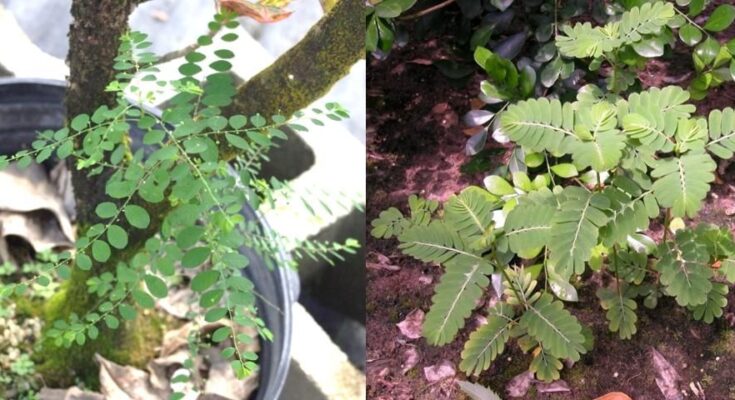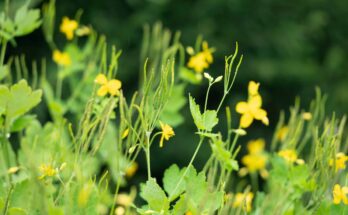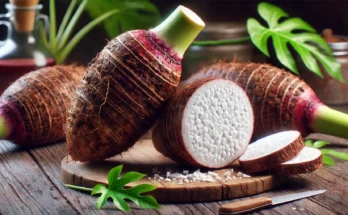Stone Breaker, scientifically known as Phyllanthus niruri, is a well-known herb in traditional medicine, revered for its ability to support kidney and liver health. The plant is commonly used to help with the breakdown of kidney stones, hence its nickname. It has a broad range of medicinal uses, and if you have access to fresh Phyllanthus niruri plants, harvesting, drying, storing, and preparing its leaves properly can allow you to benefit from its healing properties throughout the year. Here’s a comprehensive guide on how to collect, dry, store, and prepare Stone Breaker leaves for future use.
1. Identifying and Collecting Stone Breaker Leaves
Identifying Phyllanthus niruri
Before collecting Phyllanthus niruri, it’s important to ensure you’re harvesting the right plant. Stone Breaker is a small, annual herb that typically grows up to 1 meter in height. It has light green leaves arranged alternately on slender stems, and small, inconspicuous flowers that are often greenish or yellowish.
When collecting the leaves:
- Choose healthy plants that are free of diseases or pests.
- Harvest the leaves in the morning, preferably after the dew has dried but before the sun becomes too hot. This ensures the leaves retain the most active compounds and nutrients.
- Use clean, sharp scissors or pruning shears to snip the leaves off the stem. Avoid pulling the leaves to prevent damage to the plant.
Optimal Harvesting Time
The best time to collect the leaves of Phyllanthus niruri is during the plant’s flowering or fruiting stage when its medicinal properties are most potent. However, you can also collect leaves at any time during its growing season.
2. Drying Stone Breaker Leaves
Proper drying is essential to preserve the medicinal qualities of the leaves. Improper drying can result in the loss of beneficial compounds and promote mold growth.
Air Drying Method
- Spread the leaves: Lay the collected leaves on a clean, dry surface, such as a mesh screen, paper towels, or a drying rack. Avoid placing the leaves directly on the ground, as they may absorb moisture or contaminants.
- Ensure good airflow: Place the leaves in a well-ventilated area, such as a room with windows that can be opened for air circulation. Direct sunlight can degrade the active compounds, so it’s best to dry them in a shaded area.
- Turn the leaves regularly: Every few hours, gently turn the leaves to ensure even drying.
- Drying time: It typically takes around 4 to 7 days for the leaves to dry completely, depending on the humidity and temperature of your environment.
Oven Drying Method (Faster Option)
- If you’re in a hurry, you can dry the leaves in an oven. Preheat the oven to its lowest temperature setting (ideally around 95–100°F or 35–38°C). Spread the leaves in a single layer on a baking tray lined with parchment paper. Place the tray in the oven with the door slightly ajar to allow moisture to escape.
- Check every 10–15 minutes: Make sure the leaves do not get overheated. The process should take about 1–2 hours, depending on the thickness of the leaves. They are ready when they feel crisp to the touch and crumble easily.
Dehydrator Method
- For a more efficient and consistent result, you can use a food dehydrator. Follow the manufacturer’s instructions for drying herbs, which is typically set between 95–105°F (35–40°C).
- Place the leaves in a single layer on the dehydrator trays, and check the dryness every few hours.
3. Storing Dried Stone Breaker Leaves
Proper storage is crucial to maintain the potency of the dried Stone Breaker leaves.
Airtight Containers
- Once the leaves are fully dried, store them in airtight containers to prevent moisture from re-entering, which could lead to mold growth. Glass jars with tight-fitting lids or vacuum-sealed bags work well for long-term storage.
- Avoid using plastic bags, as they are more likely to trap moisture. If you do use plastic containers, ensure that the leaves are completely dry beforehand.
Storage Location
- Store your containers in a cool, dry, and dark place, away from direct sunlight, heat, and humidity. A pantry, cupboard, or drawer works well.
- The leaves should remain usable for up to 12 months if stored properly. Over time, the potency of the dried leaves may decrease, so it’s a good idea to label containers with the harvest date.
4. Preparing Stone Breaker Leaves for Use
Stone Breaker leaves can be used in various forms, depending on your preferences and intended use. Here’s how to prepare the dried leaves for consumption:
Tea Infusion
- Ingredients: 1–2 teaspoons of dried Stone Breaker leaves and 1 cup of hot water.
- Instructions: Boil water and pour it over the dried leaves in a teapot or cup. Let it steep for 5–10 minutes. You can sweeten it with honey or add a slice of lemon for flavor.
- Dosage: Drink 1–2 cups of Stone Breaker tea daily, depending on your needs. You can also use a teaspoon of leaves to prepare a more concentrated decoction.
Powdered Form
- Grinding: If you prefer to use the leaves in powdered form, grind the dried leaves into a fine powder using a mortar and pestle or a coffee grinder. You can use this powder in capsules or mix it with water or other herbal teas.
- Dosage: The typical dosage is around 1–2 grams of powdered leaf per day, but always consult a healthcare provider before starting any new herbal regimen.
Tincture or Extract
- If you wish to make a tincture, you can steep the dried leaves in alcohol (e.g., vodka) for about 2–3 weeks, shaking the jar daily. After the extraction period, strain out the plant material and store the tincture in a dark glass bottle. A standard dosage would be 20–30 drops, taken 1–3 times a day.
Topical Use
- Stone Breaker leaves can also be used for topical applications. You can make a poultice by grinding the dried leaves with a little water to form a paste. This paste can be applied to sore areas or used as a skin remedy.
5. Safety Considerations
While Phyllanthus niruri is generally considered safe for most people, it is important to use the herb responsibly:
- Consult a healthcare professional before using Stone Breaker leaves, especially if you have pre-existing conditions such as kidney disease, are pregnant, or are breastfeeding.
- Dosage: Stick to recommended dosages, as excessive consumption may lead to adverse effects.
- Allergies: Always perform a patch test if using the leaves topically, to ensure there is no allergic reaction.



